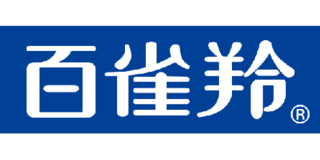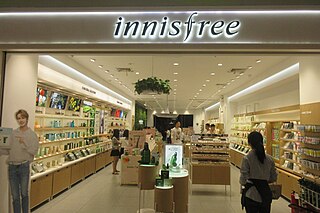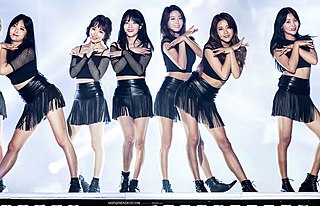Related Research Articles

Plastic surgery is a surgical specialty involving the restoration, reconstruction, or alteration of the human body. It can be divided into two main categories: reconstructive surgery and cosmetic surgery. Reconstructive surgery covers a wide range of specialties, including craniofacial surgery, hand surgery, microsurgery, and the treatment of burns. This category of surgery focuses on restoring a body part or improving its function. In contrast, cosmetic surgery focuses solely on improving the physical appearance of the body. A comprehensive definition of plastic surgery has never been established, because it has no distinct anatomical object and thus overlaps with practically all other surgical specialties. An essential feature of plastic surgery is that it involves the treatment of conditions that require or may require tissue relocation skills.
Medical tourism is the practice of traveling abroad to obtain medical treatment. In the past, this usually referred to those who traveled from less-developed countries to major medical centers in highly developed countries for treatment unavailable at home. However, in recent years it may equally refer to those from developed countries who travel to developing countries for lower-priced medical treatments. With differences between the medical agencies, such as the Food and Drug Administration (FDA) or the European Medicines Agency (EMA), etc., which decide whether a drug is approved in their country or region, or not, the motivation may be also for medical services unavailable or non-licensed in the home country.
East Asian blepharoplasty, more commonly known as double eyelid surgery, is a cosmetic procedure that reshapes the skin around the eye to create a crease in an upper eyelid that naturally lacks one. Although 70-83% of East Asian women naturally have upper eyelid creases, it is estimated that 17-30% of Chinese and Japanese women lack this feature. This surgery may be performed on individuals of East Asian descent, including those from Chinese, Japanese, and Korean backgrounds. The primary goal is to enhance the eyelid's appearance, making the eyes appear larger and, according to some cultural aesthetics, more attractive due to a 'wide eyed' and expressive appearance.

A day spa is a business that provides a variety of services for the purpose of improving health, beauty, and relaxation through personal care treatments such as massages and facials. The number of day spas in the US almost doubled in the two years from 2002 to 2004, to 8,734, according to the International Spa Association, and by 2020 there were 21,560 spas across the United States, according to Statista.

The history of cosmetics spans at least 7,000 years and is present in almost every society on earth. Cosmetic body art is argued to have been the earliest form of a ritual in human culture. The evidence for this comes in the form of utilised red mineral pigments including crayons associated with the emergence of Homo sapiens in Africa. Cosmetics are mentioned in the Old Testament—2 Kings 9:30 where Jezebel painted her eyelids—approximately 840 BC—and the book of Esther describes various beauty treatments as well.

Female Chinese beauty standards have become a well-known feature of Chinese culture. A 2018 survey conducted by the Great British Academy of Aesthetic Medicine concluded that Chinese beauty culture prioritizes an oval face shape, pointed, narrow chin, plump lips, well defined Cupid's bows, and obtuse jaw angle. The importance of feminine beauty in China has been deeply ingrained into the culture: historically, a woman's livelihood was often determined by her ability to find an eligible husband, a feat aided by fitting into the cultural ideals of beauty.
Aesthetic medicine is a branch of modern medicine that focuses on altering natural or acquired unwanted appearance through the treatment of conditions including scars, skin laxity, wrinkles, moles, liver spots, excess fat, cellulite, unwanted hair, skin discoloration, spider veins and or any unwanted externally visible appearance. Traditionally, it includes dermatology, oral and maxillofacial surgery, reconstructive surgery and plastic surgery, surgical procedures, non-surgical procedures, and a combination of both. Aesthetic medicine procedures are usually elective. There is a long history of aesthetic medicine procedures, dating back to many notable cases in the 19th century, though techniques have developed much since then.

Pechoin is a skin care brand under Shanghai Pehchaolin Daily Chemical Co Ltd based in Shanghai, China. Originally founded in 1931, Pechoin is China's first domestic skincare brand. The company manufactures cosmetic products including skincare products and perfumes. It is one of the largest skincare companies in China and a leading Chinese cosmetics brand. In 2013, Pechoin products were recognized as "national gifts (国礼)" of the People's Republic of China.
The feminine beauty ideal is a specific set of beauty standards regarding traits that are ingrained in women throughout their lives and from a young age to increase their perceived physical attractiveness. It is experienced by many women in the world, though the traits change over time and vary in country and culture.
Since the late-2000s, the People's Republic of China (PRC) has sought to internationalize its official currency, the Renminbi (RMB). RMB internationalization accelerated in 2009 when China established the dim sum bond market and expanded Cross-Border Trade RMB Settlement Pilot Project, which helps establish pools of offshore RMB liquidity. The RMB was the 8th-most-traded currency in the world in 2013 and the 7th-most-traded in early 2014.

Innisfree (Korean: 이니스프리) is a South Korean cosmetics brand owned and founded by Amore Pacific in 2000. The brand name derives from Irish poet W. B. Yeats' poem, 'The Lake Isle of Innisfree'. Innisfree has stores in South Korea, Hong Kong, Macau, Mainland China, Japan, Taiwan, Singapore, Malaysia, Thailand, Vietnam, Indonesia, the Philippines, India, the United States, Canada, Australia, and the United Arab Emirates.

The cosmetic industry describes the industry that manufactures and distributes cosmetic products. These include colour cosmetics, like foundation and mascara, skincare such as moisturisers and cleansers, haircare such as shampoos, conditioners and hair colours, and toiletries such as bubble bath and soap. The manufacturing industry is dominated by a small number of multinational corporations that originated in the early 20th century, but the distribution and sale of cosmetics is spread among a wide range of different businesses. Cosmetics must be safe when customers use them in accordance with the label's instructions or in the conventional or expected manner. One measure a producer may take to guarantee the safety of a cosmetic product is product testing. FDA occasionally does testing as part of its research program or when looking into potential safety issues with a product. Both the cosmetics business and consumers can benefit from the FDA's resources on product testing.

Korean beauty standards have become a well-known feature of Korean culture. In 2015, a global survey by the International Society of Aesthetic Plastic Surgeons placed South Korea in the top ten of countries who had the highest rate of cosmetic surgeries.

K-beauty is an umbrella term for skincare products that are derived from South Korea. The fad gained popularity worldwide, especially in East Asia, Southeast Asia, South Asia, and the Western world, and focuses on health, hydration, and an emphasis on brightening effects.

Sexualization and sexual exploitation in K-pop refers to elements of sexualization and sexual exploitation in K-pop, which was once seen as a conservative music industry. This is in part due to 21st century globalization, with Korean entertainment and record label companies intending to market their idols abroad.
Male grooming refers to men paying attention to fashion and enhancing their own appearance. This interest has become increasingly apparent in popular culture.
South Korea has been considered a medical tourism destination since 2009, attracting more than 2.76 million foreign patients between then and 2019. The increasing number of patients seeking medical treatment in South Korea do so for multiple reasons, such as low medical costs, high quality medical services, short waiting times, and tourism packages combining relaxation and tourism.
Instagram face is a beauty standard based on the filters and influencers popular on Instagram. An "Instagram face" has catlike eyes, long lashes, a small nose, high cheekbones, full lips, and a blank expression. Digital filters manipulate photographs and video to create an idealized image that, according to critics, has resulted in an unrealistic and homogeneous beauty standard. According to Jia Tolentino, the face is "distinctly white but ambiguously ethnic". The face has been described as a racial composite of different peoples.

Cosmetic surgery is voluntary or elective surgery for beauty enhancement. The motivation for plastic surgery has been debated throughout Korean society. Holliday and Elfving-Hwang suggest that the pressure of success in work and marriage is deeply rooted in one's ability to manage their body which is influenced by beauty. As companies helping with matchmaking for marriage and even job applications require a photo of the individual, Korean population inevitably feels pressure to undergo plastic surgery to achieve the "natural beauty".
C-beauty, or Chinese beauty is an umbrella term encompassing contemporary beauty products, practises, and ideals originating from China. China has the second largest beauty market in the world, after the United States. Common C-beauty products include cosmetics, skin care, hair care, perfumes, and nail art. C-beauty often incorporates influences from traditional Chinese medicine and Chinese art.
References
- ↑ "Cosmetic Surgery vs. Plastic Surgery | American Board of Cosmetic Surgery". American Board of Cosmetic Surgery. Retrieved 2018-11-13.
- ↑ "Does cosmetic surgery really make people feel better?". BBC News. 2016. Retrieved 2018-11-13.
- ↑ "Around 8 million people have undergone surgery in China". GBTIMES. Archived from the original on 2019-04-21. Retrieved 2018-11-13.
- ↑ "Asia Pacific Cosmetic Surgery & Procedures Market Size, Trends & Analysis 2017-2026". Inkwood Research. Retrieved 2018-11-29.
- 1 2 3 Brownell, Susan (2005). "Cosmetic surgery". Encyclopedia of Contemporary Chinese Culture. Routledge. pp. 115–116. ISBN 978-0-415-77716-2.
- ↑ "China crowns Miss Plastic Surgery". BBC. 2004-12-18.
- ↑ "China crowns first Ms Artificial Beauty". The Irish Times. Retrieved 2023-10-08.
- ↑ Zhu, Katherine Zhu; Zhao, Megan (August 31, 2010). "The PRC: Plastic Republic of China". ABC News. Retrieved 2022-05-03.
- ↑ HSBC. "2 Stocks Riding China's Cosmetic Surgery Boom" . Retrieved 2018-11-29.
- ↑ Kwok, Ben (2018-10-29). "China's lucrative medical beauty market is booming". Asia Times. Retrieved 2023-02-10.
- ↑ Lee, Emma (2018-07-30). "Cosmetic surgery app GengMei raises $50 million led by Meitu · TechNode". TechNode. Retrieved 2023-02-10.
- ↑ Ko Tin-yau, "The sad story of a cosmetic surgery addict," 14 September 2017. Retrieved 21 November 2018 from http://www.ejinsight.com/20170914-the-sad-story-of-a-cosmetic-surgery-addict/
- ↑ "China: medical aesthetics market size 2015-2020 | Statistic". Statista. Retrieved 2018-11-21.
- ↑ Iskyan, Kim. "China's middle class is exploding". Business Insider. Retrieved 2023-02-10.
- ↑ Yu, Ran (2016-02-15). "Women spend fortunes on cosmetic procedures". China Daily. Archived from the original on 2018-01-16 – via PressReader.
- ↑ "China's cosmetic surgery market to explode in the next few years, analysts say". South China Morning Post. 2016-02-15. Retrieved 2023-02-10.
- ↑ Stevenson, Alexandra (2014-12-24). "Plastic Surgery Tourism Brings Chinese to South Korea". The New York Times. ISSN 0362-4331 . Retrieved 2023-02-10.
- ↑ "John Lie on Korean Popular Culture and Soft Power - Asia Experts Forum". Asia Experts Forum. 2018-03-26. Retrieved 2018-12-03.